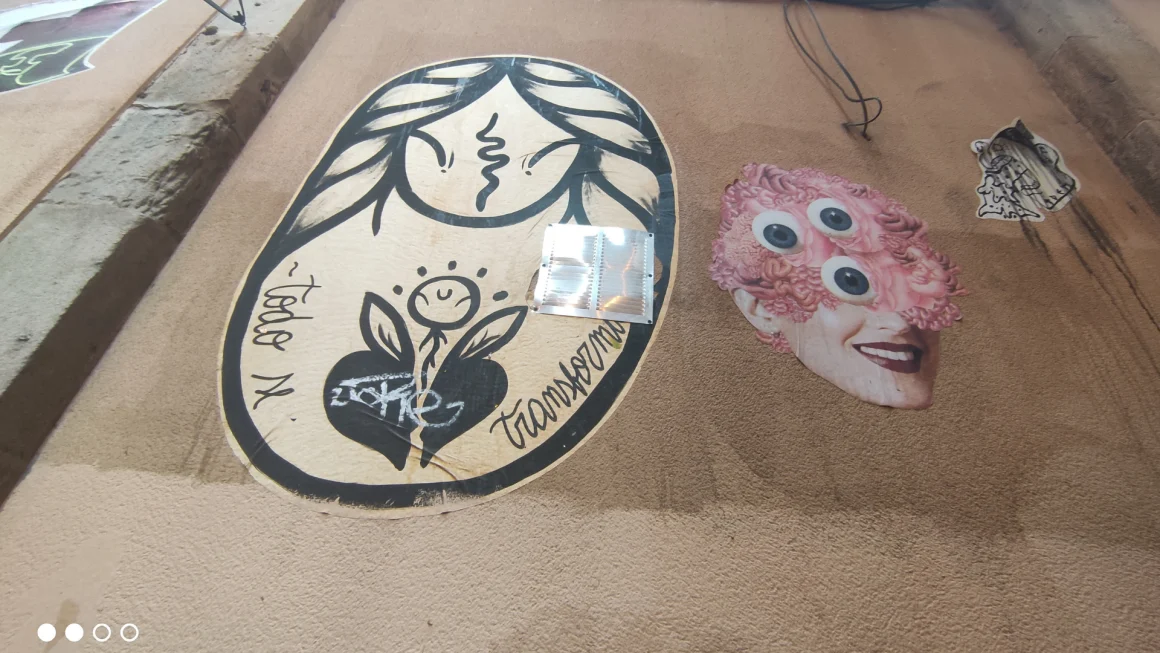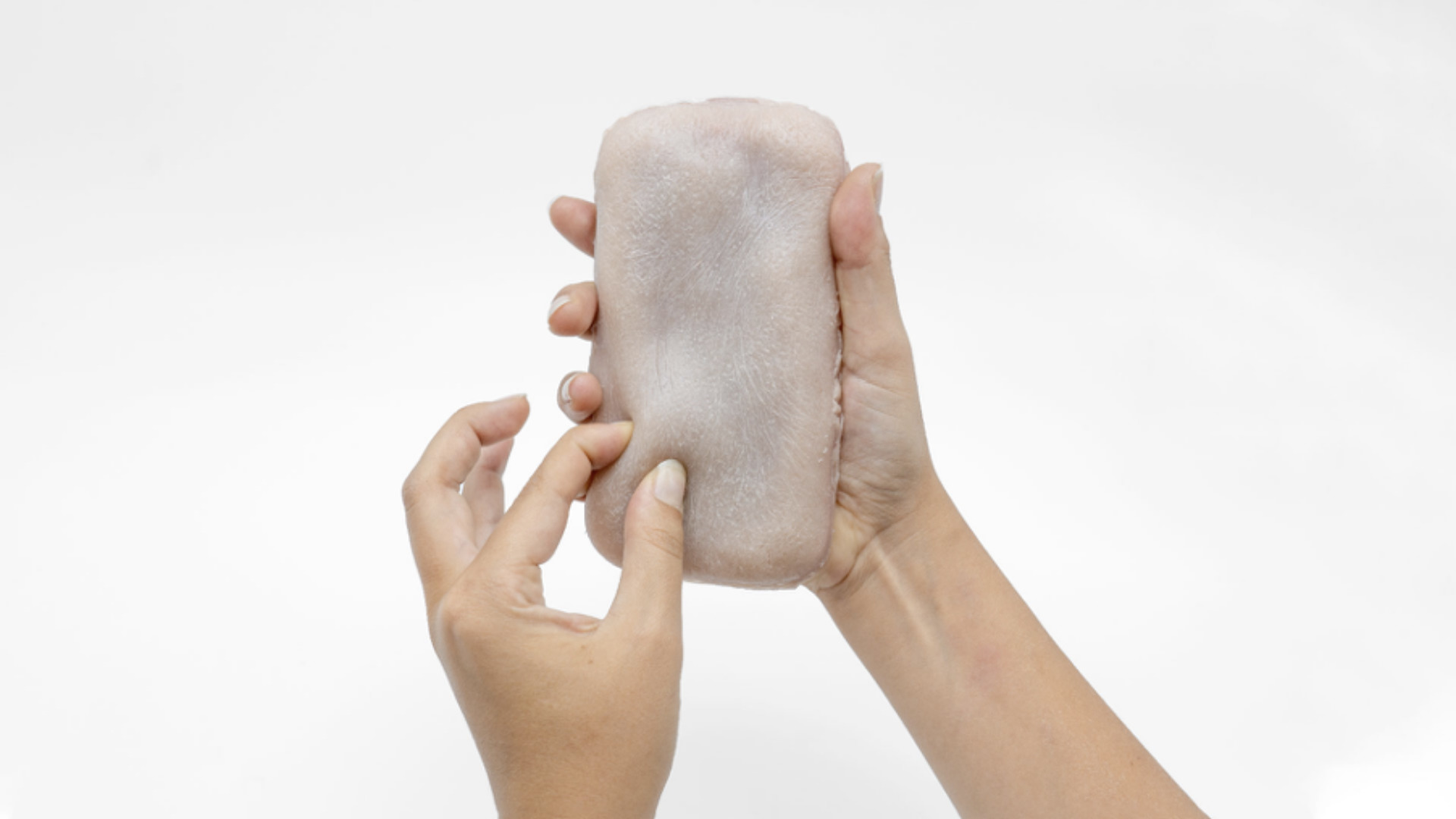What is it
Human flesh on your phone? Sounds crazy right! Let me take away your fears. I am not talking about real human skin on a phone. It is synthetic anthropomorphic technology on your phone case. A phone that has synthetic human skin on it. We are living in a world full of technology but there are still some differences between face-to-face communication and communication through electronic devices. One of those differences is the way of interacting with each other. Normally when we interact in real-life with each other, we use skin as interfaces, but when you are interacting through your mobile phone this isn’t the case. Your phone will always stay a cold, chilly and unhuman device which makes us unable to interact in a natural way with this device.
As a response to the digital world, these skin-on interfaces have been developed by Marc Teyssier. They are giving a boost to electronic devices by adding synthetic human skin to them. By adding Skin-on interfaces to existing devices, their capabilities are being increased. This product is proposed to be a new paradigm whereby electronic devices have their own artificial skin (Wray, 2019). In addition, these artificial skins allow new forms of input gestures for users. The skin is able to track natural gestures such as pressure, multitouch touch but also complex gestures such as strokes, grabbing and stretching. The interfaces are sensitive skin-like input methods. Anthropomorphic technology is a new opportunity to enable more human interactions with our electronic devices. They will make us bond with our tech.
“I explore touch in human-computer interaction. When we are talking to someone face-to-face, we sometimes use touch to convey affect, emotions and more generally enrich the discourse. Now that mediated communication is performed through the devices, we [have] lost the sense of touch communication modality.” -Explained Marc Teyssier in an e-mail. (Stanley, Help, I Can’t Unsee These Faux-Flesh Phone Cases, 2019)
Why it’s Cool
- According to Teyssier’s website, he used a realistic version of human skin to restore the cold interface of electronic devices, because our skin is the best link of how people interact with each other. (Teyssier, Artificial Skin for Mobile Devices, 2019)
- The artificial skin is programmed to detect various gestures and relate these gestures to emotions. This interface translates human-like gestures and interactions into controlling electronic devices. For example, if you twist the artificial skin, the volume of your smartphone can be raised. If you tickle the skin, you can send a laughing emoji through a text message and many more innovative capabilities. In the Skin-On Interfaces, there is a built-in grid of sensors with multisensory factors that are endless. These can be converted into different functions that your electronic device comprehends.
- The Skin-on Interfaces opens new ways of interaction with our cold and chilly unhuman devices.
Why it has Future Growth Potential
‘’M.Teyssier told Gizmodo that he didn’t start this project with any particular future application in mind for the prototypes, but rather to propose a possible future with anthropomorphic devices.’’ -(Stanley, Help, I Can’t Unsee These Faux-Flesh Phone Cases, 2019)
“Artificial skin design for robots are usually focused on reproducing the tactile acuity and sensing capability, our design allows us to perform expressive gestures such as pinching while having a robust touch detection. The texture impacts the tactile perception and makes the interface more humanlike and realist.” (Teyssier, 2019) Even if it looks a little creepy, Teyssier thinks that adding artificial skin to technology is worth exploring, for example, adding artificial skin to robots or prosthetics.
This design could open new ways by bridging the gap between technology and our natural human interaction. It could increase bonding between people and electronic devices, but it also has a potential for the future when we are talking about robotics. For example robotics with realistic human skin. Maybe it could be applied in day-to-day activities which revolutionize the way people interact with technology.






